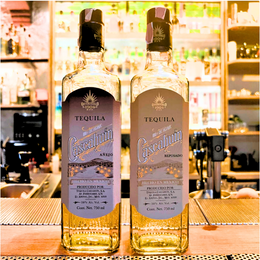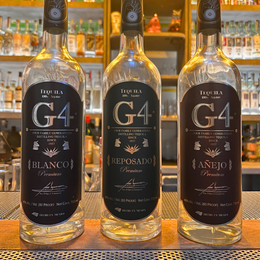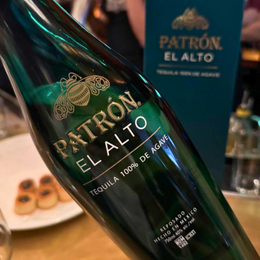
Today we're going to taste something that is so deeply historic to Mexico, and is a spirit that really deserves the same amount of recognition that Tequila or Mezcal has. And it certainly looks promising. In just the span of the past decade, the massive rise in interest in Mexico's native spirits have certainly been heartening to see - again, thoroughly well deserved considering that these are the only spirits or drink in the world that requires anywhere from 6 to 20 years for its base ingredient to fully mature, whether it be the agave, or in this case, the dasylirion (or just call it an asparagus). Every artesanal or ancestral small batch distilled is years in the making, with the expertise in making these spirits carried through from one generation to the next almost entirely by means of spoken verbal instruction.
And so today, we're going to delve deep into another historic native spirit of Mexico - the Sotol.


A Brief Introduction To Sotol
Sotol has been making great strides in creating a presence for itself, an impressive feat considering that it was only legalised in the early 1990's, despite its hundreds of years of history as a popular traditional spirit of Mexico. Today it enjoys an appellation of its own (since 2002), where it can only be made in the Mexican states of Chihuahua, Coahuila and Durango (towards the north of Mexico, as opposed to Tequila in the South). Nevertheless unlike its cousins Tequila and Mezcal, it's yet to receive an international denomination that enshrines its craft to Mexico as its sole source of origination - that is, Sotol only being labelled as such if it is made in Mexico.

Wild Dasylirion.
The spirit in question comes from the Dasylirion Wheeleri, which is also often nicknamed the Desert Spoon for the way its leaves appear. It must be pointed out that this makes Sotol different from Tequila and Mezcals which instead come from the Agave plant - they might look similar, are produced in similar fashion, but actually belong to a different family, with the Dasylirion also being the same family as the asparagus. That's not where the differences end - if the Agave is constantly bemoaned by Mezcaleros for taking many years to ripen for harvest, typically 6-8 years is optimal for it to collect enough sugars; well, then the Dasylirion easily puts that to shame, requiring 15 to 22 years to be ready. And even after an immensely long wait, each Dasylirion plant yields just 1 bottle of Sotol, which pales in comparison to the 8-9 bottles of Tequila or Mezcal produced per Agave.
A Political Twist And Turn
And that's just all plant matter - there's also the political and social history of Sotol that not only makes it an incredibly rare craft that teetered so close to extinction, but is therefore also one that makes the spirit so intriguing and special.

Cooking the heart or "pina" of the Dasylirion.
For over 800 years, the indigenous people of Chihuahua, called the Raramuri, had fermented Sotol juice to produce an alcoholic drink akin to beer. Then somewhere in the 16th Century, it was the Spanish colonists who had wanted to produce a spirit from the Sotol, which was where distillation was introduced. Once Sotol as a distilled spirit was created, it had almost immediately gain widespread popularity with the locals - yet that popularity would turn out to bite Sotol in the behind when everyone wanted to get in on it, which led to an inevitable decline in quality. As many "distillers" of Sotol (and Mezcal, really) were pretty much moonshiners, the spirit they produced were at times even dangerous or fatal - rumour spread that drinking Sotol could make you blind. The snake venom sometimes added in for specialty Sotol certainly added to that effect.

The result was that the Spanish folks in power, whom mostly inhabited south Mexico, had wanted nothing to do with Sotol (and Mezcal) and had also wanted to drive up demand for their own wines being imported to Mexico (which was a big source of revenues), and thus began policing and banning production of the spirit, driving these Sotol producers further up north in a bid to distill in secret. In a twist of fate, this northern geographical inhabitance proved incredibly lucrative when Prohibition struck neighbouring America in the 1920's! Bootleg Sotol became hot in America and for a period of time was incredibly popular with the American people. This was all fine until the Bourbon barons of America started to feel the pinch - they would end up working with the Mexican government to crack down on Sotol makers in what became a manhunt for anyone who would produce the spirit.

Ruelas' grandfather selling Sotol to bootleggers.
"Back then, if you had a problem with the government, they’d just kill you," says one Sotolero. It wasn't even uncommon for mom and pop Sotol makers to have their distillation stills marked with bullet holes. Many Sotol makers would find themselves out of place and had to operate in the shadows simply to keep the tradition alive. This almost drove Sotol-making to extinction if not for a handful of Sotoleros who would constantly be on the move around the vast and harsh Mexican countryside, carrying with them their copper stills on donkey. This would last some six decades until Sotol making was legalised again in the early 1990's. Since then, Sotol has been quick to regain its cultural capital and have found support from many locals who too see it as part of their Mexican heritage - and thanks to the rise in interest in Agave spirits, Sotol has been able to tap on some of that tailwind with also of course the help of a new generation of dedicated Sotoleros.

Gerardo Ruelas, a surviving Sotolero.
A Surviving Sotolero Brings Sotol To The World
Gerardo Ruelas is one such Sotolero. Ruelas is the fourth generation of his family to produce artesanal Sotol, with his destileria the oldest surviving in the state of Chihuahua. His family had been one of said Sotoleros who managed to survive the ban, with his grandfather holding claim to having sold Sotol to Al Capone. Ruelas produces a range of Sotols, from blancos to aged anejos, and even produces Cremas de Sotol, which features various adjunct ingredients adding in such as walnuts to go with the cream, said to be similar to Bailey's Irish Cream. Ruelas even goes as far as to make the traditional and considerably esoteric stuff that includes snake flesh and venom that goes into the Sotol.
In his palenque, Ruelas produces Sotol much as Mezcal is made. He harvests wild Dasylirions which are then roasted in a pit and grounded by way of mule and tahona (a volcanic stone wheel), which he then distills in a copper pot still as per artesanal tradition. Ruelas produces for a range of brands that he owns, which includes Sotol Coyote and Oro de Coyame, amongst others. Ruelas has done much to advance the international awareness of Sotol, and also regularly consults with nascent Sotol, Mezcal and Tequila makers interested in producing their spirit in an artesanal way, and as such Ruelas is widely considered amongst the most skilful and respected of Sotoleros.

At the one and only Cat Bite Club, a haven for agave spirit lovers.
Today we're incredibly lucky to have Beatriz Maida from Bar Pajaro who's helming an Agave 101 masterclass over at Singapore's Cat Bite Club (which is inarguably the best place to try a wide selection of quality agave spirits), organised by the bar's manager Erika, and supported by La Maison du Whisky, who carries the Sotol Coyote that we'll be trying today.
Sotol Coyote comes from Clan Coyote, a brand that's helmed by Gerardo Ruelas, who as mentioned is one of the most respected Sotol makers in Mexico. The brand gets its name by way of paying homage to the three characters of the Mexican desert - the Dasylirion plant, the men who inhabit the land, and the coyotes who wander its wilderness. Clan Coyote has a social imperative to bring much needed international awareness to Sotol, lest it disappears altogether, and thus features a range of Sotols that are made from each of the three Mexican states where Sotol can be made - Chihuahua, Durango and Coahuila. This is in hopes of ensuring that the three terroirs are enshrined and kept alive and represented to the world.

Today we'll be taste testing the Sotol Coyote Chihuahua. As the name implies, this comes from Dasylirion harvested from the Chihuahua region, which is then placed in a conical stone with mesquite wood that lines a clay oven to cook the plant. Thereafter it is manually ground with an axe, and then fermented in oak vats with well water. It is finally double distilled using a copper still and bottled unaged at 50% ABV.
Let's give it a go!
Taste Testing Sotol Coyote Chihuahua, 50% ABV - Review

Tasting Notes
Colour: Clear
Aroma: Remarkably rich and creamy, it sports an aromatic vanilla creaminess, sprinkled on with some black pepper, it's bright yet rich and filled in with a fresh vegetal succulent scent of sliced cactus. With time, it takes on a more floral and brighter tone. More on floral blossoms, sweet bbq, with a persistence of that sweet creamy smokiness of lightly grilled vegetables and smoked cream.
Taste: Still incredibly creamy here, leaning sweeter with this super rich vanilla and gentle smoke. It's giving sweet BBQ, yet somehow it remains clean and fresh. More on minerals of spring water and chalk, it's got this lifted quality to the body, which wraps around a core of delicate and elegant supple syrupy sweetness that's almost like sugar syrup. It's incredibly creamy with such cohesiveness and roundedness.
Finish: More of that rich, sweet smoke, lots of sweet grilled aubergines and zucchinis. It stays super creamy and rich with all those nice BBQ notes. It finishes off with a soft yet deep warmth.

My Thoughts
This was such an experience! This was utterly rich and creamy, filled in with all this sweet BBQ smokiness. It leans sweeter, with no bitterness at all, and carries with it this fresh cleanness, really quite elegant and supple on the body, with this core of pure sugar sweetness. I found this totally incredible with just how rounded, delicate, plush yet firm, with this concentrated sweet, smoky, creamy sweetness. This is really something else!
Whilst it's hard to characterise Sotols broadly, it is said that it tends to be sweeter and richer compared to Mezcals (again a broad generalisation considering the vast diversity of Mezcals) - here I definitely get that with the purity of that core of sweetness nestled in the heart of the body.
Definitely give this a try! It's been a couple of days since I tried it and I'm still thinking about it, damn.
Kanpai!

@111hotpot







